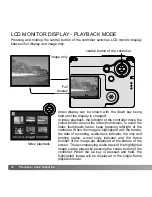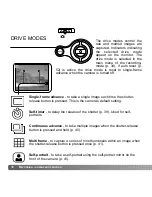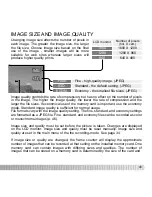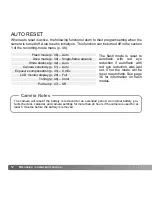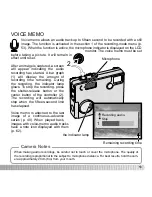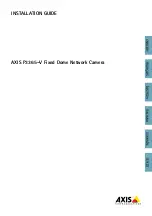
Changing image size affects the number of pixels in
each image. The greater the image size, the larger
the file size. Choose image size based on the final
use of the image - smaller images will be more
suitable for web sites whereas larger sizes will
produce higher quality prints.
LCD monitor
1600
1280
640
Number of pixels
(hor. X vert.)
1600 X 1200
1280 X 960
640 X 480
IMAGE SIZE AND IMAGE QUALITY
Image quality controls the rate of compression, but has no effect on the number of pixels
in the image. The higher the image quality, the lower the rate of compression and the
larger the file sizes. If economical use of the memory card is important, use the economy
mode. Standard image quality is sufficient for normal usage.
File formats vary with the image quality setting. The fine, standard, and economy settings
are formatted as a JPEG file. Fine, standard, and economy files can be recorded as color
or monochrome images (p. 46).
Image size and quality must be set before the picture is taken. Changes are displayed
on the LCD monitor. Image size and quality must be reset manually. Image size and
quality are set in the main menu of the the recording-mode. See page 34.
If image size or quality are changed, the frame counter will display the approximate
number of images that can be recorded at that setting on the installed memory card. One
memory card can contain images with differing sizes and qualities. The number of
images that can be stored on a memory card is determined by the size of the card and
Economy - the smallest file sizes. (JPEG)
Fine - high-quality image. (JPEG)
Standard - the default setting. (JPEG)
FINE
STD.
ECON.
43




